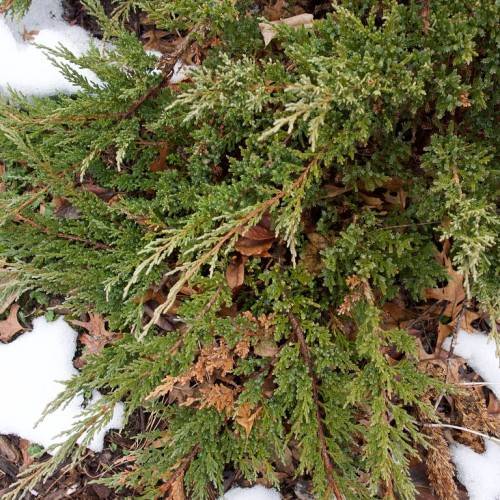
creeping juniper
Juniperus horizontalis 'Glomerata'
Cycle:
Perennial
Watering:
Minimum
Hardiness Zone:
2
Flowers:
Flowers
Sun:
Full sun
Soil:
Sandy Loamy Clay Rocky
Fruits:
Fruits Ready In Fall
Leaf:
Yes
Growth Rate:
Low
Maintenance:
Low
Drought Tolerant:
Yes
Salt Tolerant:
Yes
Thorny:
Yes
Invasive:
Yes
Care Level:
Low
watering
Creeping Juniper plants should be watered thoroughly every 7-10 days. When watering, be sure to moisten the soil to a depth of 10-12 inches or until the water begins to run freely from the bottom of the pot. Allow the soil to dry slightly between watering. For best results, water in the morning when temperatures are cooler. During active growth periods, increase water as needed to keep the soil evenly moist. In the winter months, water less often as the plant may become too vulnerable to fungal diseases.
sunlight
Creeping junipers (Juniperus horizontalis 'Glomerata') do best in areas with full sun. They need at least 6 hours of direct sunlight each day for optimal health. In areas where summers are very hot, it may be better to provide filtered sunlight for this species. To do this, an east-facing location is best, where the sun will be filtered by a fence or other vegetation early in the morning, but bright sunshine will be available from midday onward. In northern climates where summers are cooler, up to 8 hours of direct sunlight can be beneficial.
pruning
Creeping juniper (Juniperus horizontalis 'Glomerata') should be pruned each winter to maintain its shape and size. Generally, the best time to prune is during the dormant season, usually after the first frost. Prune up to about 1/3 of the total growth, making sure that no more than the top 2-3 inches of growth is removed. Begin by removing any dead, diseased, or damaged branches. Be sure to also prune back any branches that have grown upright rather than horizontally. After making these main cuts, it is also a good idea to thin out some of the inner growth to allow more light and air circulation to the center of the plant.
